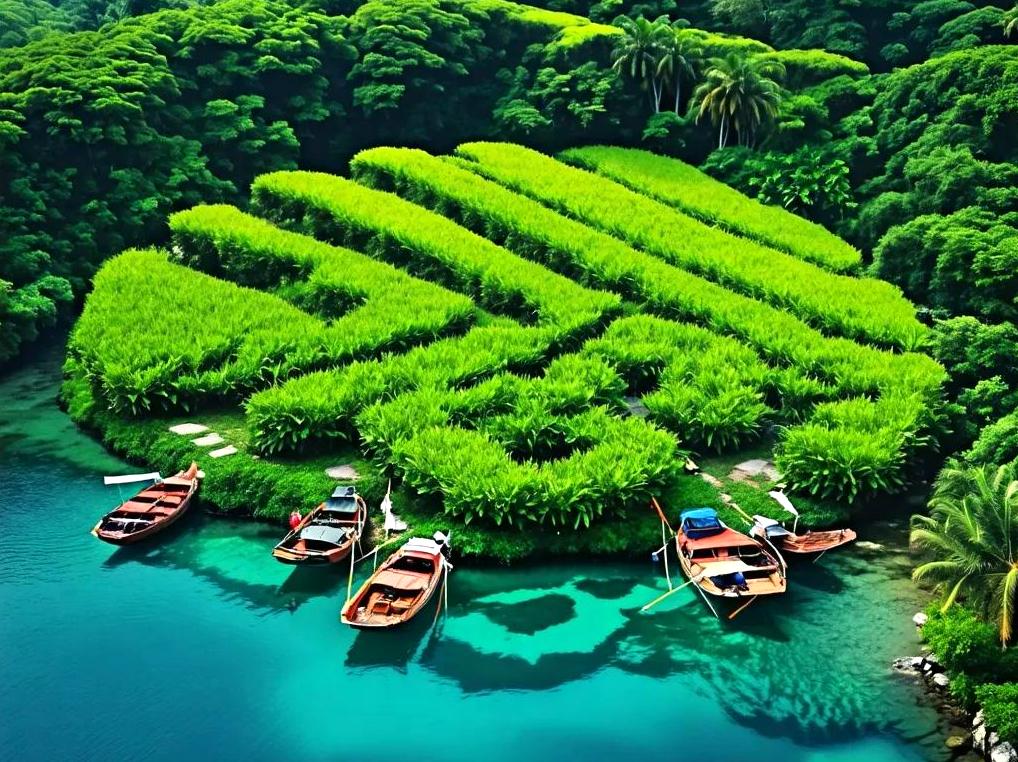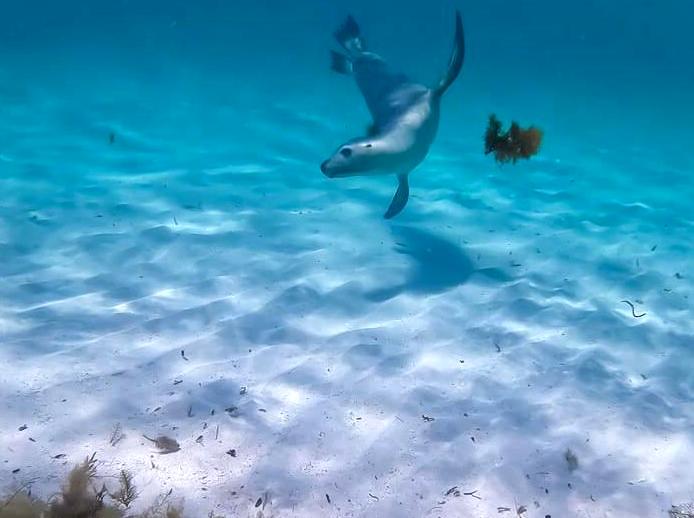Kakadu National Park is a UNESCO World Heritage site in Australia’s Northern Territory. It is known for its beautiful landscapes and unique wildlife. But one of the most amazing things about this place is its rock art. The Indigenous people have been painting on rocks here for thousands of years, and their ancient masterpieces are still visible today. These paintings tell us stories about the past and help us connect with the land around us. If you visit Kakadu, you can see these incredible works of art for yourself – and learn more about the region’s first inhabitants at the same time. In this article, we’ll explain why they’re so important, where to find them, and how to show your respect.

Why is Kakadu’s Rock Art Important?
Ancient History
The rock art in Kakadu isn’t just pretty pictures; it’s a window into ancient history. Some of these artworks are up to 65,000 years old – that makes them one of the oldest continuous artistic traditions in the world! Archaeologists have found evidence that different generations used similar techniques when making these paintings. This means they were carefully taught over many years, so that stories from long ago could be passed down through time. People painted all kinds of things on rocks here: everyday scenes like hunting or fishing; spiritual symbols representing gods or ancestors; even maps showing how different groups were related to each other. The age range alone would be enough to amaze any historian or archaeologist – but there’s also incredible variety in style across such an enormous span, which shows just how enduring Indigenous culture has been in Australia.
Culture
For Aboriginal Australians today (and always), these aren’t just pictures; they’re part of their culture too! Each one tells a story – or rather, many stories – about laws, customs and spiritual beliefs. They’re like windows into the Dreamtime, which is their word for the time when everything was created. Some show gods or ancestors; others show plants or animals that are important to them because they’re good to eat or have special powers. But all of them are sacred: made by people who knew what they were doing and why; shared with others who understood where they came from and what had happened before. So if you want to understand this art properly, you need to listen carefully as well as look.
Where Can I See Rock Art in Kakadu?
Ubirr
One of the most famous rock art sites in Kakadu National Park is Ubirr. It’s easy to see why so many people visit here every year – there are lots of paintings, and some of them are really old! For example, there’s one picture of a Thylacine (a kind of extinct marsupial) that could be 20,000 years old! But it’s not just about age: these pictures are also beautiful. You can see kangaroos and fish; people dancing or playing music! And if you climb up to the top of Ubirr lookout at sunset! The view alone is worth it – but then when you turn around and see all those ancient pictures against such an amazing backdrop.
Nourlangie
Another great place to see rock art in Kakadu is Nourlangie. This site has been used by Aboriginal people for thousands of years – maybe even longer than Ubirr! There are lots of different paintings here, showing all kinds of things. Some are about animals or plants; others are about people or spirits. But they’re all special because they were made by people who wanted to share their knowledge and beliefs with others. So if you walk around Nourlangie, you’ll see not just one story but many stories – and each one will help you understand a little bit more about what it means to be human.

This website has a wide range of rock paintings, including the Lightning Man which is deeply rooted in Aboriginal mythology. There are also unique images of local wildlife that show how the Indigenous people lived as hunter-gatherers. Each stroke tells a story and teaches visitors about the relationship between Indigenous Australians and their environment. Nourlangie is not just an art gallery but also a classroom where people can learn about respect for nature and tradition. With well-marked trails and signs, exploring Nourlangie offers visitors a meaningful way to connect with this heritage site.
As one learns more about the history and techniques behind rock art, it becomes clear how important these arts were to Aboriginal cultural identity.
Understanding Rock Art Techniques
Traditional Methods and Materials
The creation of rock art in Kakadu involved using natural materials which showed off the ingenuity of Indigenous artists. Traditional methods included using ochre pigments taken from the earth mixed with binders such as animal fat or water; this allowed for vibrant colours ranging from reds and yellows through to whites and blacks. Artists often used tools made from sticks, brushes or their fingertips to apply paint creating textures that give depth and life to the artwork. Symbols and motifs were selected following cultural conventions with every detail being carefully planned so as to communicate a particular narrative or message. Knowing these techniques enhances an appreciation for the art while reminding us about labour-intensive processes behind its creation – thus indicating artists’ deep respect for materials used as well as stories they tell.
Modern Conservation Efforts
Preservation of Kakadu’s rock art is crucial because these ancient treasures face many threats like weathering due to climate change, pollution caused by industrial activities near them among others including human interference such as vandalism or theft.. Modern conservation efforts have concentrated on monitoring sites where these arts are found and putting in place measures that will protect them for future generations. Government agencies together with indigenous custodians have been working hand in glove to come up with preservation strategies which combine scientific knowledge about ecology and traditional wisdom from locals. This collaboration ensures that conservation attempts are done respectfully as well as inclusively considering indigenous perspectives. Education plays a significant role in this process whereby communities around such areas involve visitors so that they can appreciate cultural value attached to rock art while also understanding why it needs to be safeguarded forever. Through various programmes, continuous research work plus community participation there is hope that ancient artworks like these will continue inspiring coming ages.
Experiencing Kakadu’s Rock Art

Guided Tours and Resources
If you want to see the rock art in Kakadu, there are different guided tours available which give detailed information about each site visited. Knowledgeable guides share historical facts, techniques used during creation as well as cultural significance attached to these paintings. Visitor centres provide educational materials such as interpretation panels or brochures aimed at enhancing understanding among tourists who may not have prior knowledge on this subject matter. Joining a guided tour not only makes your visit more fulfilling but also ensures that you interact with sites in a respectful manner while being conscious of their fragility due to age or other factors affecting them.. Many tour operators also promote sustainable tourism by advocating for small group sizes so as not to overcrowd sacred places thus minimizing negative impact caused by large numbers of people converging at one point within limited space available.. Such holistic approach towards discovery creates deeper connections with heritage sites within Kakadu thereby enabling individuals leave having gained greater insights into land art.
Responsible Tourism Practices
When visiting Kakadu National Park it is important for travellers to adopt responsible tourism practices which will help safeguard rock art sites for future generations. Respect and awareness should be shown when approaching sacred places.
- Always stay on marked paths and in designated viewing areas.
- Do not touch or try to climb or deface the rock art in any way.
By following these simple yet crucial practices, visitors can enjoy Kakadu’s rock art beauty while helping to preserve it for years to come. Another great way of engaging with the sites is through guided tours which foster a respectful attitude towards the cultural landscape.

As an additional resource, here is a brief overview of Kakadu’s notable rock art sites:
| Site | Notable Features | Age of Art |
|---|---|---|
| Ubirr | Marsupial lion depiction, breathtaking sunset views | About 20,000 years old |
| Nourlangie | Lightning Man, abundant wildlife imagery | Up to 20,000 years old |
Conclusion
Finding hidden rock art in Kakadu National Park is an eye-opening experience that allows one to understand how deep Indigenous culture and history are. TDiscover Hidden Rock Art, these ancient treasures that serve as important links between past and present by embodying stories, beliefs, and knowledge systems of Aboriginal people. Powerful places like these also help us develop greater respect for our own heritage as well as natural environments around them. Therefore engaging with such arts not only broadens personal horizons but also supports ongoing conservation efforts. In other words, history lives on through these sacred spaces of Kakadu’s rock art.
FAQs
1. What makes Kakadu’s rock art unique?
Kakadu’s rock art is unique because it is very old, some paintings are over 20,000 years old. It shows the rich cultural heritage of Aboriginal people and their deep connection with land.
2. Can I visit all rock art sites in Kakadu National Park?
While many rock art sites can be visited by tourists, some areas may need guided tours for conservation reasons. Always check park guidelines and respect any restrictions imposed.
3. How can I contribute to the preservation of rock art?
You can contribute to its preservation by learning about indigenous culture, following park rules and donating money towards organizations that work towards preserving cultural heritage in Kakadu.
4. What should I know before visiting rock art sites?
Prior knowledge on significance of these places; adherence to posted instructions; treating them with care since they are sacred to aboriginal people.
5. Are there any challenges to the preservation of rock art in Kakadu?
Yes there are such as natural erosion due weather conditions; human activities like vandalism; climate change impacts among others which require concerted efforts for their mitigation so as not compromise this cultural history for future generations.



